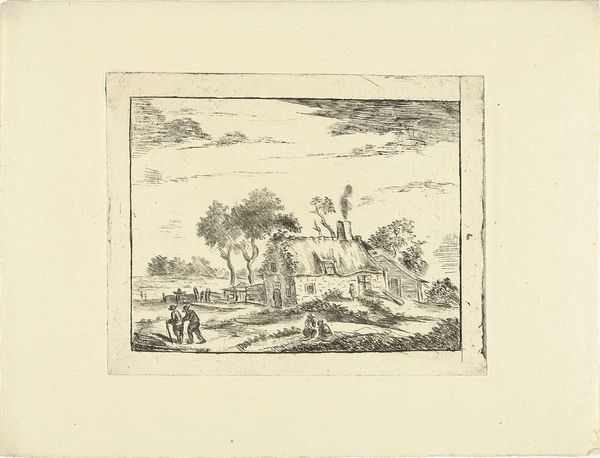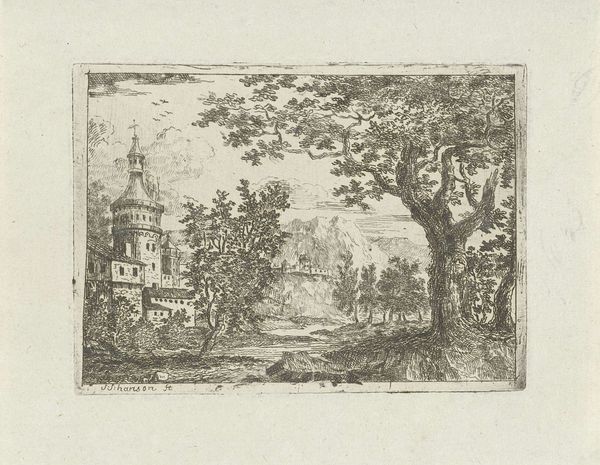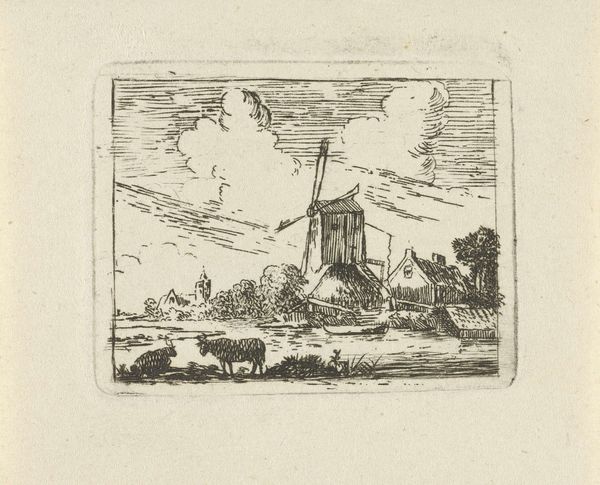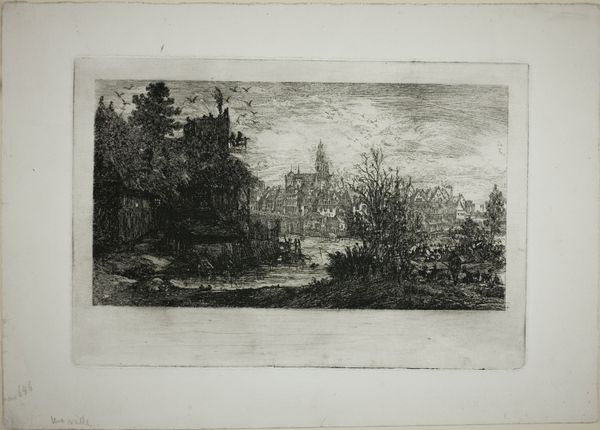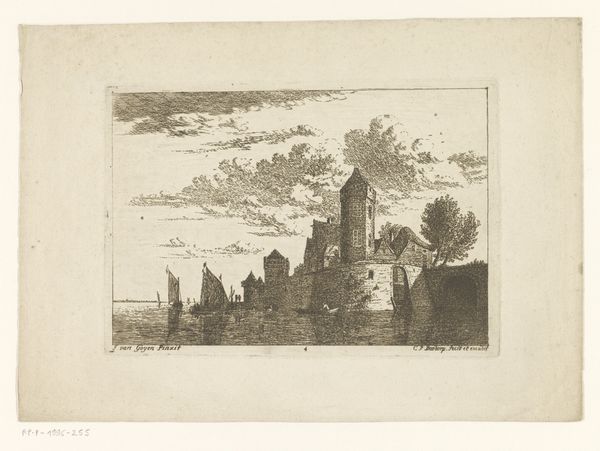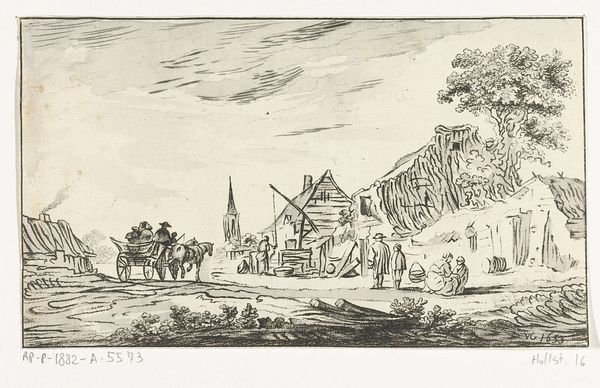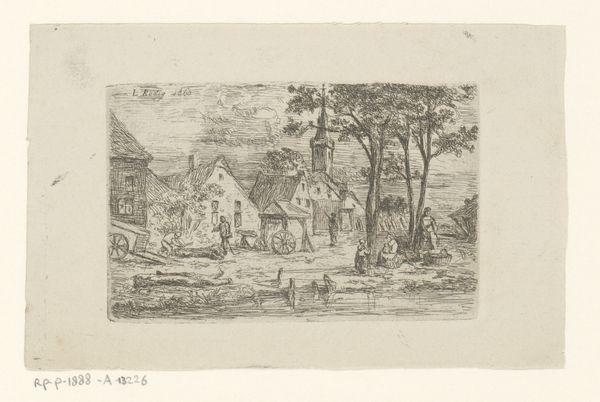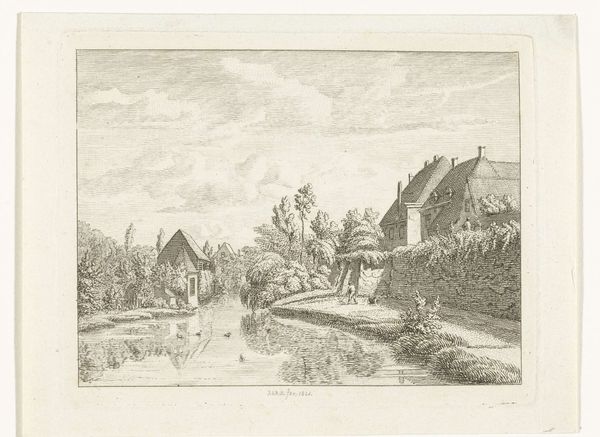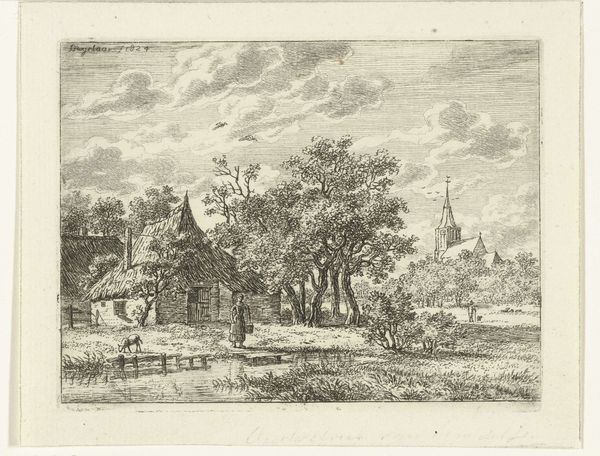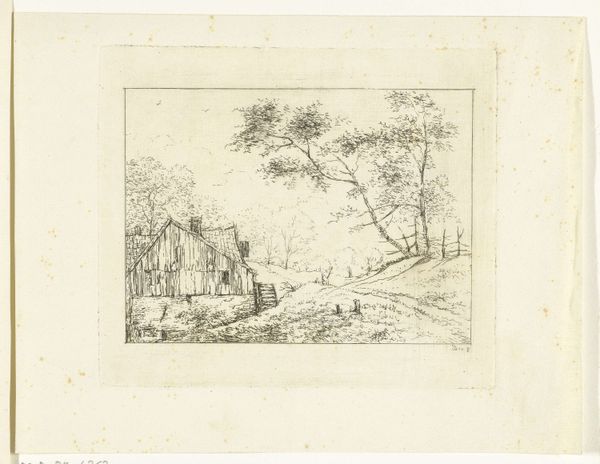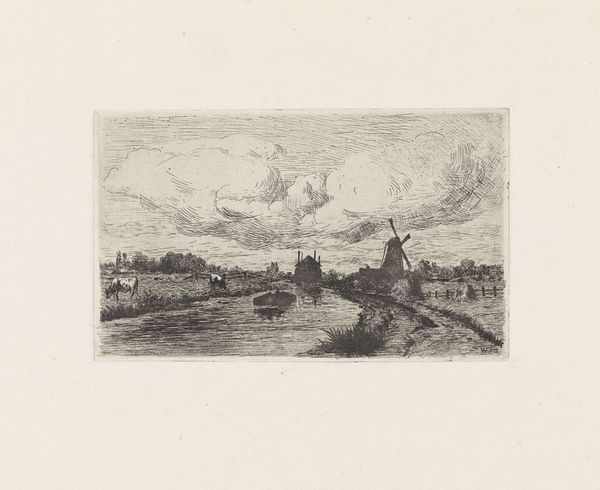
print, etching
#
baroque
# print
#
etching
#
old engraving style
#
landscape
#
cityscape
Dimensions: height 70 mm, width 160 mm
Copyright: Rijks Museum: Open Domain
Curator: Here we have "Landscape with a View of a Church in a Village" by Cornelis Claesz. van Wieringen, dating from around 1614 to 1618. It’s an etching, a type of printmaking that allows for incredibly fine detail. Editor: The first thing that strikes me is how stark and clear everything is, like a carefully constructed stage set. The artist uses delicate lines, and everything is so evenly lit. Curator: That clarity is key to understanding these landscapes. Van Wieringen worked in a period when the Dutch Republic was defining its identity. The rising merchant class commissioned works that showed off their orderly, prosperous lives. A church at the heart of a tidy village would project stability. Editor: I agree that the crisp details certainly convey a sense of order, and I wonder what part of the work the artist wanted viewers to engage with first? My gaze is drawn into the landscape, starting from the rocks at the edge, the path in the center. What is your point of entry? Curator: Interesting point about that entry point, but also consider the placement of the church, standing proudly, facing the village like an enduring establishment, in the lives of the community members. Editor: Ah, it could be about the balance the church creates through placement, its dark roof contrasted with white exterior, along with the symmetry of that cross towering above it all! This helps you feel the magnitude of the central construction. Curator: And of course, prints like these had a wide circulation. Beyond just conveying the idea of this landscape to the middle class in the Netherlands at this time, this work may also communicate it to different nations, therefore, projecting these Dutch values more widely. Editor: Exactly. So, my impression is that it evokes an aesthetic balance in architectural form while communicating the essence of stability of the Dutch, for yourself, it’s communicating a societal structure through architectural organization. It shows the multiple roles art can occupy. Curator: Yes, it serves as an idealized vision but it tells us so much about the aspirations of that society and the use of religious construction as tools. Editor: A compelling dialogue between form and historical content, which expands how we see.
Comments
No comments
Be the first to comment and join the conversation on the ultimate creative platform.

